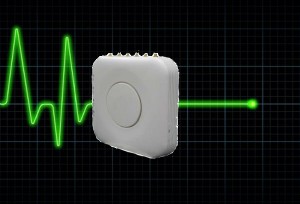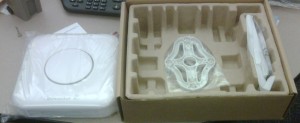 This is part two of my saga into finding decent wireless network appliances for our enterprise. In part one, I talked about our evolution with Cisco/Aironet products up to the fatal results with their 1130 model.
This is part two of my saga into finding decent wireless network appliances for our enterprise. In part one, I talked about our evolution with Cisco/Aironet products up to the fatal results with their 1130 model.
In calling around to some vendors, resellers and enterprise administrators, I got the most unusual recommendation. They were all talking about the BlueSocket 1700/1740 access points. So, just before Christmas 2009, I called my reseller and asked about them. He echoed their comments and talked about how many units they were selling. So, without further delay, I placed two on immediate order hoping for them to arrive during the holiday shutdown for an easy install. Unfortunately, they never arrived. I called my reseller and asked about delivery and was told they were sold out and expected shipment any day. Fast forward another week and this time I am told that the 1700/1740 product line is being replaced by the new 1800/1840 line which is available. No problem. I switched the order and awaited delivery. Another week passes and I am still waiting. Finally, I am told that the manufacturer had problems and had to return the 1800 units for repair. However, the 1840 was available now. Again, switch gears and change the order and I finally get my unit.
Not Your Typical Out-of-Box Experience
Once the unit arrives, a small group of IT guys assemble in my office for the unveiling. The first thing we all noticed, was the ordinary brown box with only a company name printed on it. Once we opened that, we saw the head unit, a desktop stand and a wall mount adapter. That was it! No documentation, no instructions, no license information. As a matter of fact, there was not one single piece of paper anywhere to be found.
Well, we are a very technical team and most of this stuff is pretty mundane anyway, so we move on. The next thing we notice is there is no power cord. The unit uses 802.3af PoE (Power of Ethernet) and I have compliant switches and power injectors. Without documentation, what IP address will it use? Perhaps DHCP? Never mind, we figure we can get detailed information from our switches and sniffers to figure out what is going on. The problem is that the device does not power up. We try everything we have and still nothing. We let it sit for a few minutes and watch the traffic. No link on the switch, no power apparent on the device (no lights or signals), so it appears to be dead on arrival.
We call the reseller the next day and report the problem. I even suggest that perhaps this was a known dead unit that was returned since it had no documentation. Remember, we have been struggling with very little success with the Cisco 1130 devices and this is just putting us deeper in trouble with our users. We are told that another unit is being shipped overnight and we will get it the next day.
 After another trying day, the new unit arrives and we all gather to see what happens. Again, not a single piece of documentation, just a few parts. I am so shocked by this, that I take a picture and send it to my colleagues and the reseller. No one can believe their eyes. Oh well, time for our next test. I am still on the phone, when I pick up the unit and attempt to open the taped anti-static bag for the unit. I hear the unmistakable clink of sheet metal rattling around inside the unit. I bust out laughing that we must be cursed. I get the reseller on the conference call and shake the unit next to the speakerphone. When he asks what made that noise, I said it is the replacement wireless network unit you just shipped me. He was speechless.
After another trying day, the new unit arrives and we all gather to see what happens. Again, not a single piece of documentation, just a few parts. I am so shocked by this, that I take a picture and send it to my colleagues and the reseller. No one can believe their eyes. Oh well, time for our next test. I am still on the phone, when I pick up the unit and attempt to open the taped anti-static bag for the unit. I hear the unmistakable clink of sheet metal rattling around inside the unit. I bust out laughing that we must be cursed. I get the reseller on the conference call and shake the unit next to the speakerphone. When he asks what made that noise, I said it is the replacement wireless network unit you just shipped me. He was speechless.
I opened the unit and could see the flashing rolling around inside of it. I refused to attach power for a number of reasons and simply repackaged it for an RMA.
So, back to the drawing board looking for a reliable, usable wireless access point for the company. I just did not know how hard of a job this could be.

 (1 votes, average: 4.00 out of 5)
(1 votes, average: 4.00 out of 5)![Reblog this post [with Zemanta]](http://img.zemanta.com/reblog_e.png?x-id=fd5b136f-0441-49dd-9c3c-35252ab33f75)
